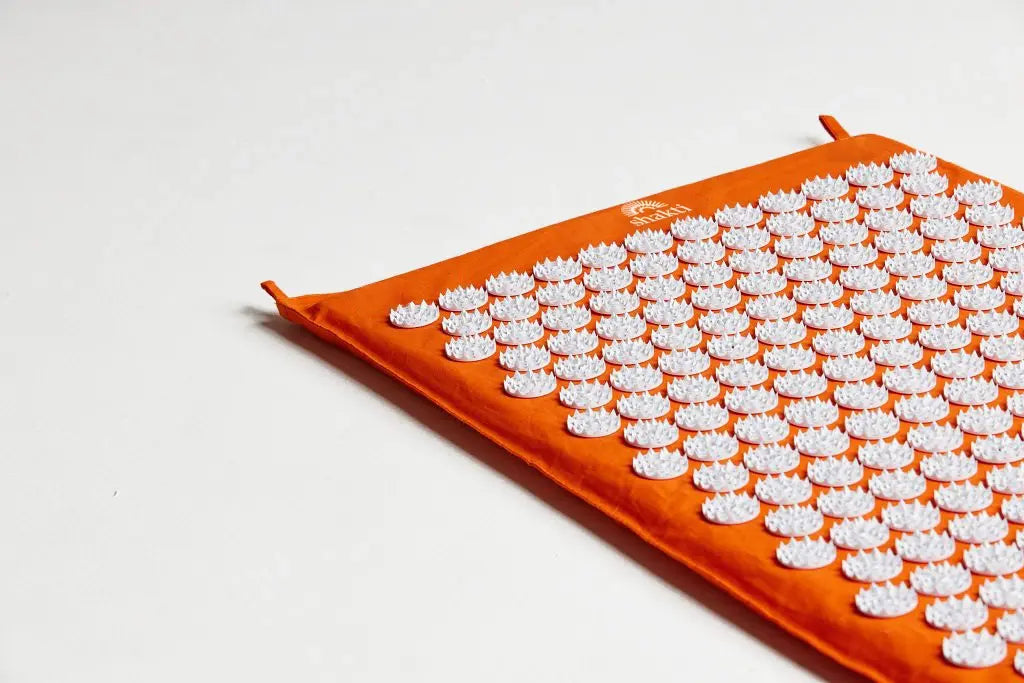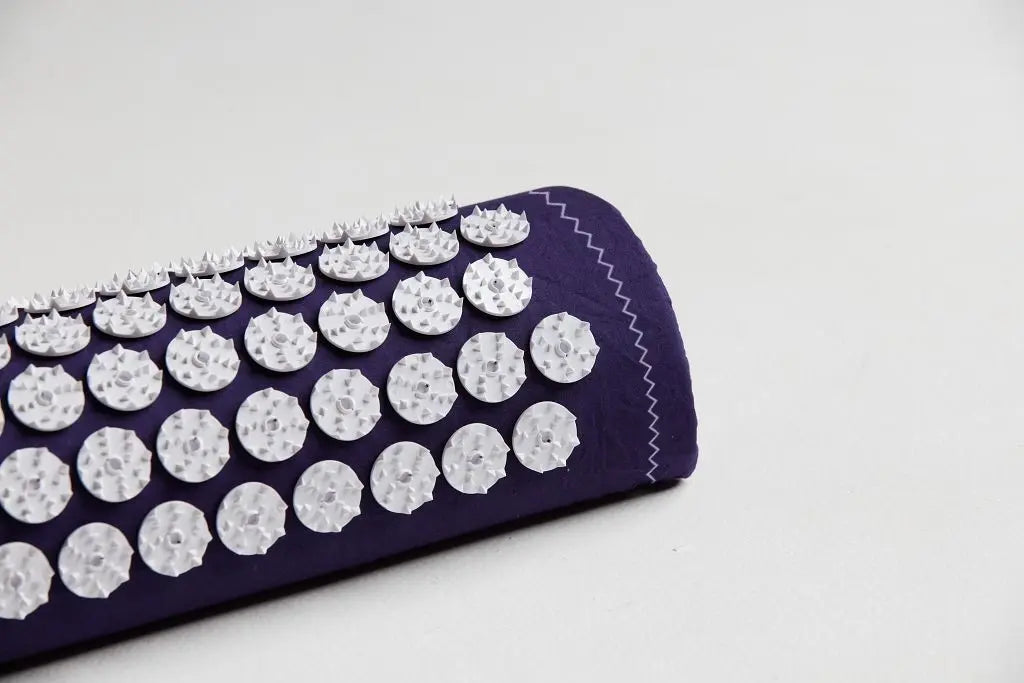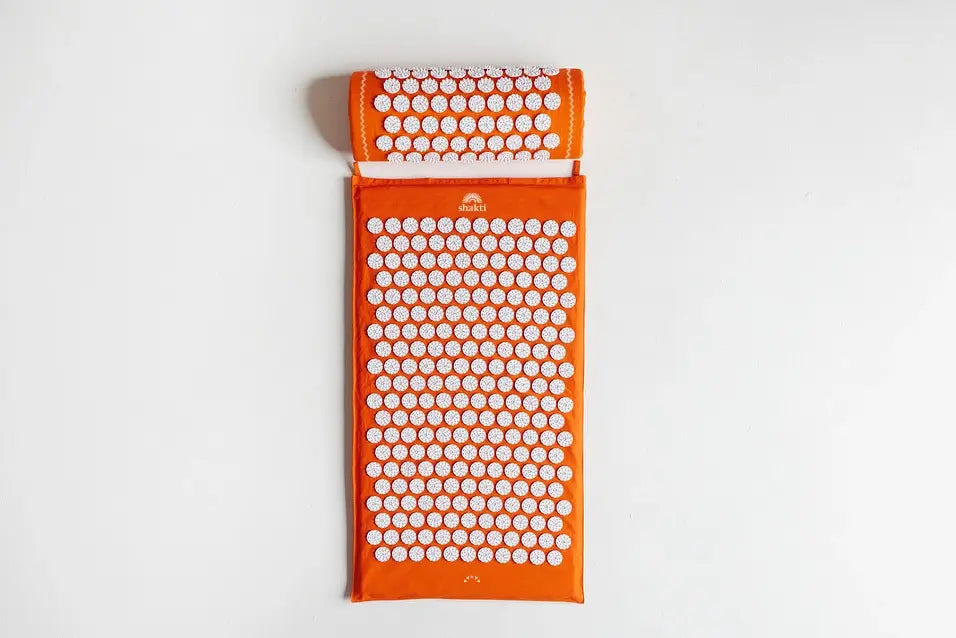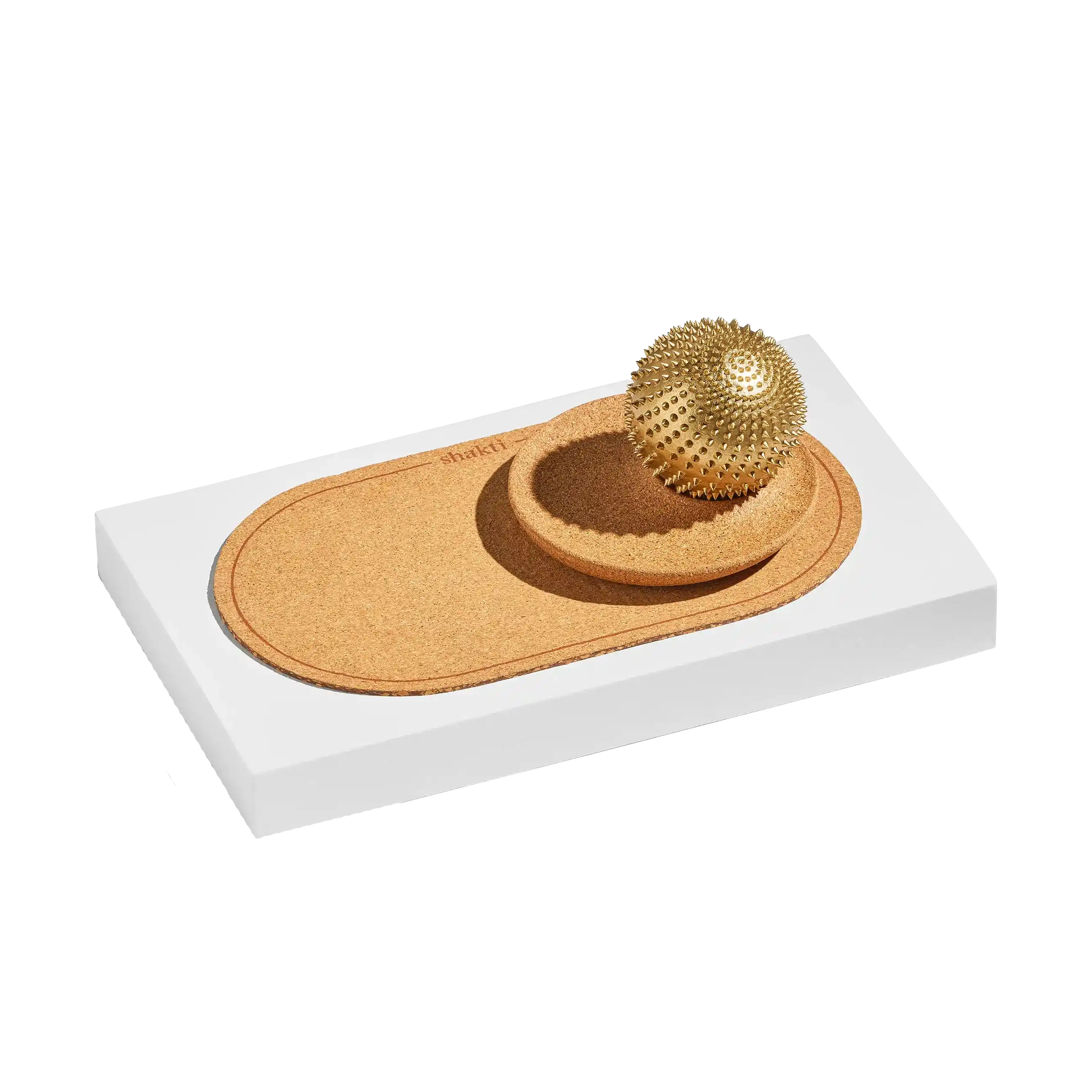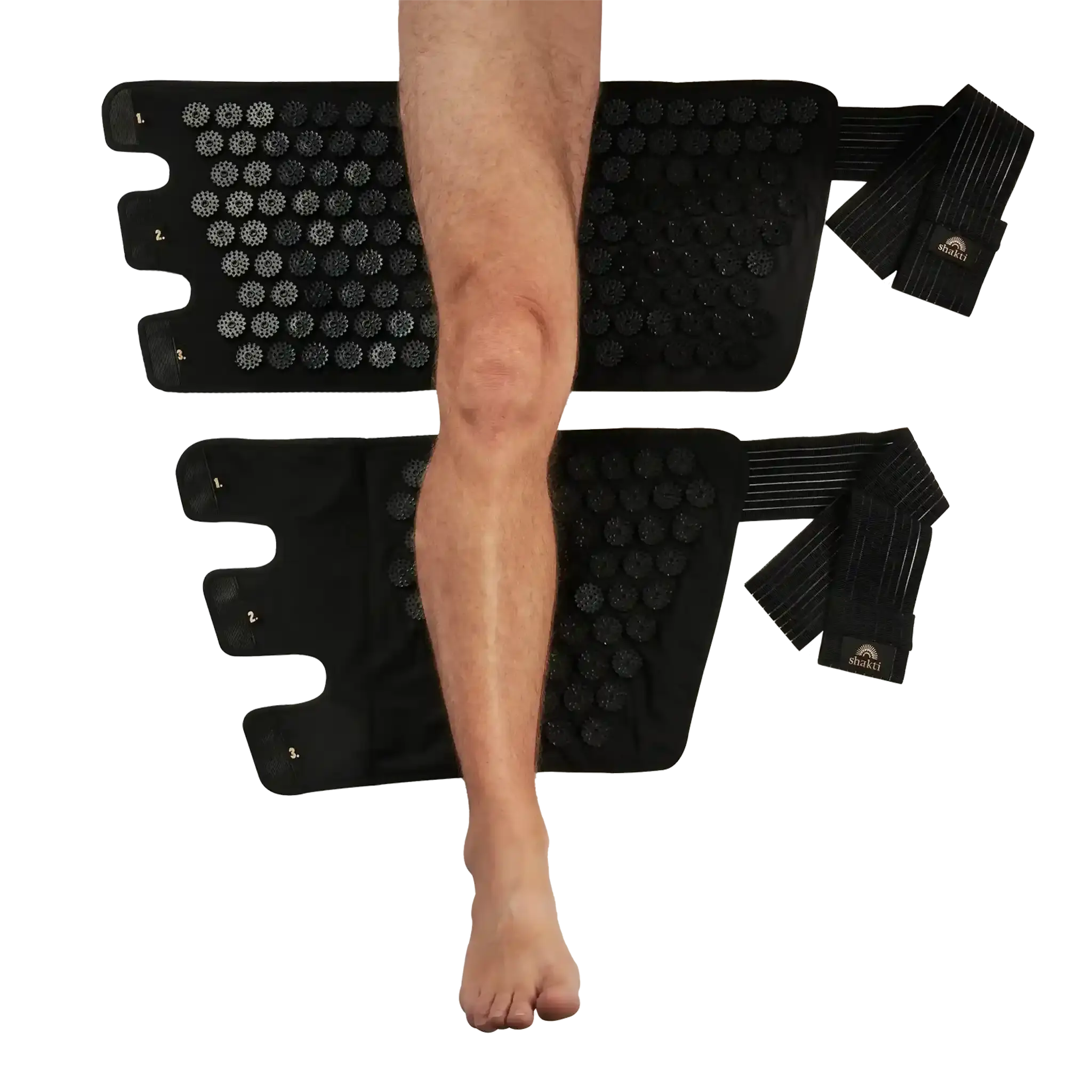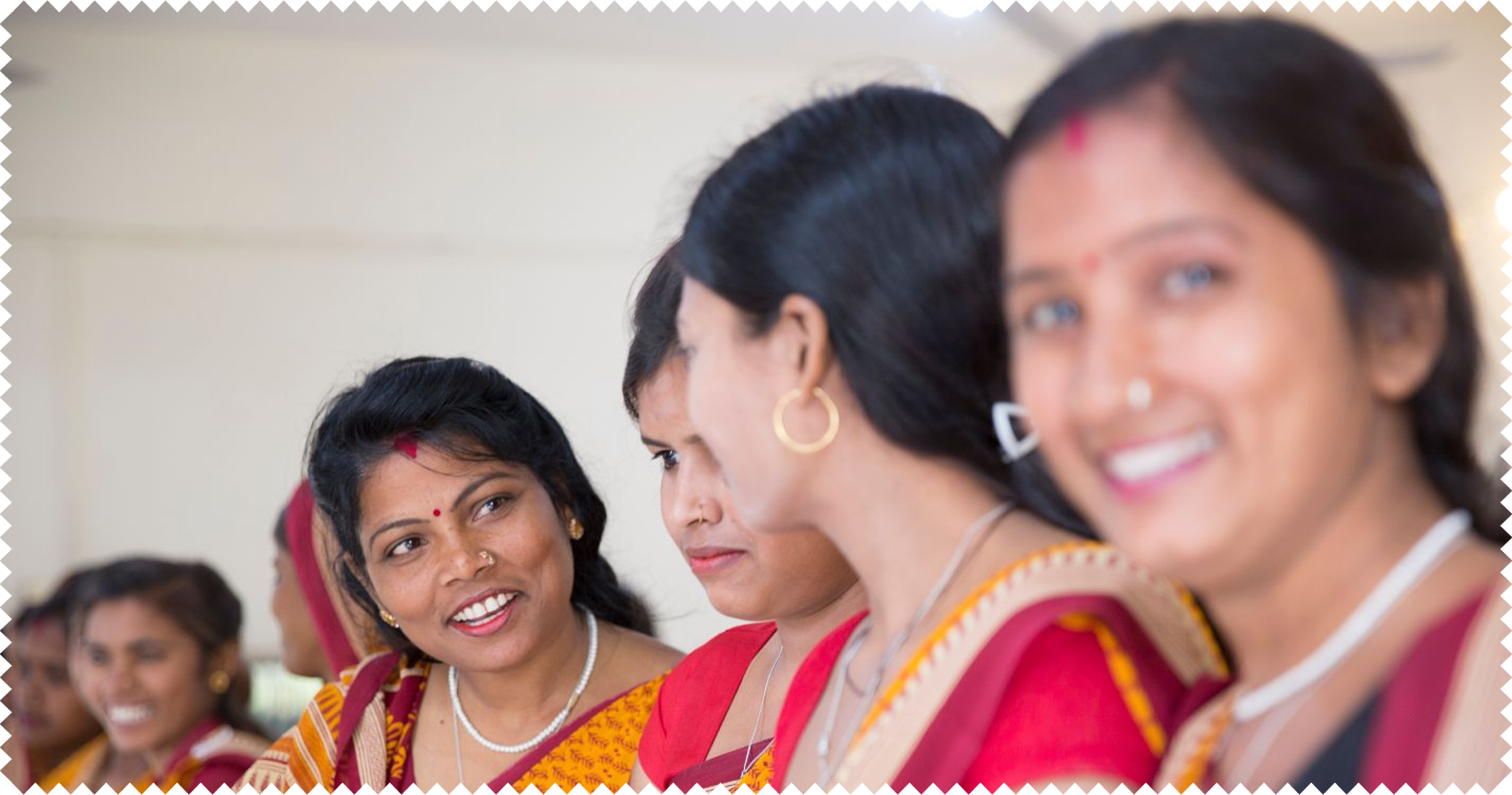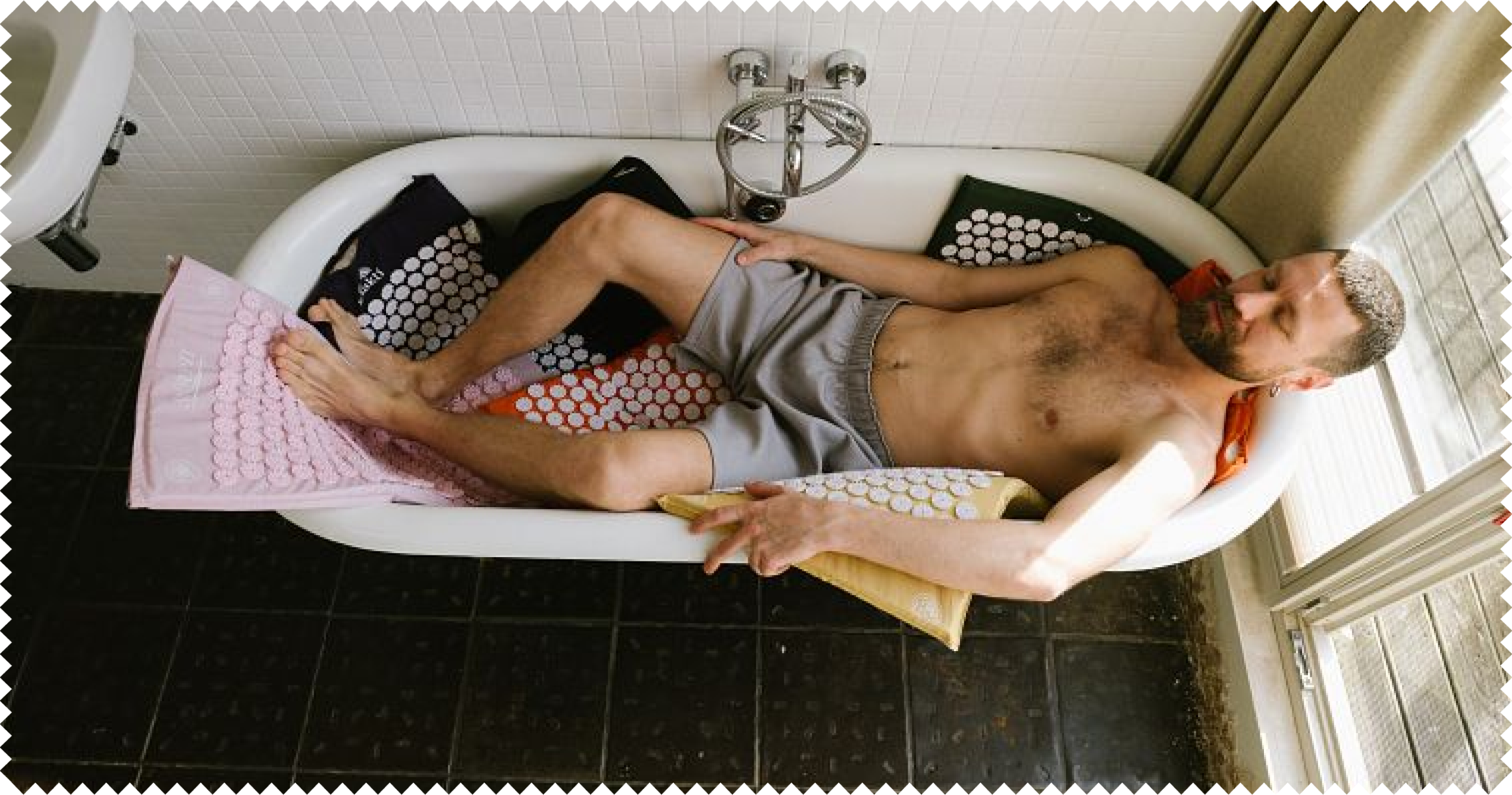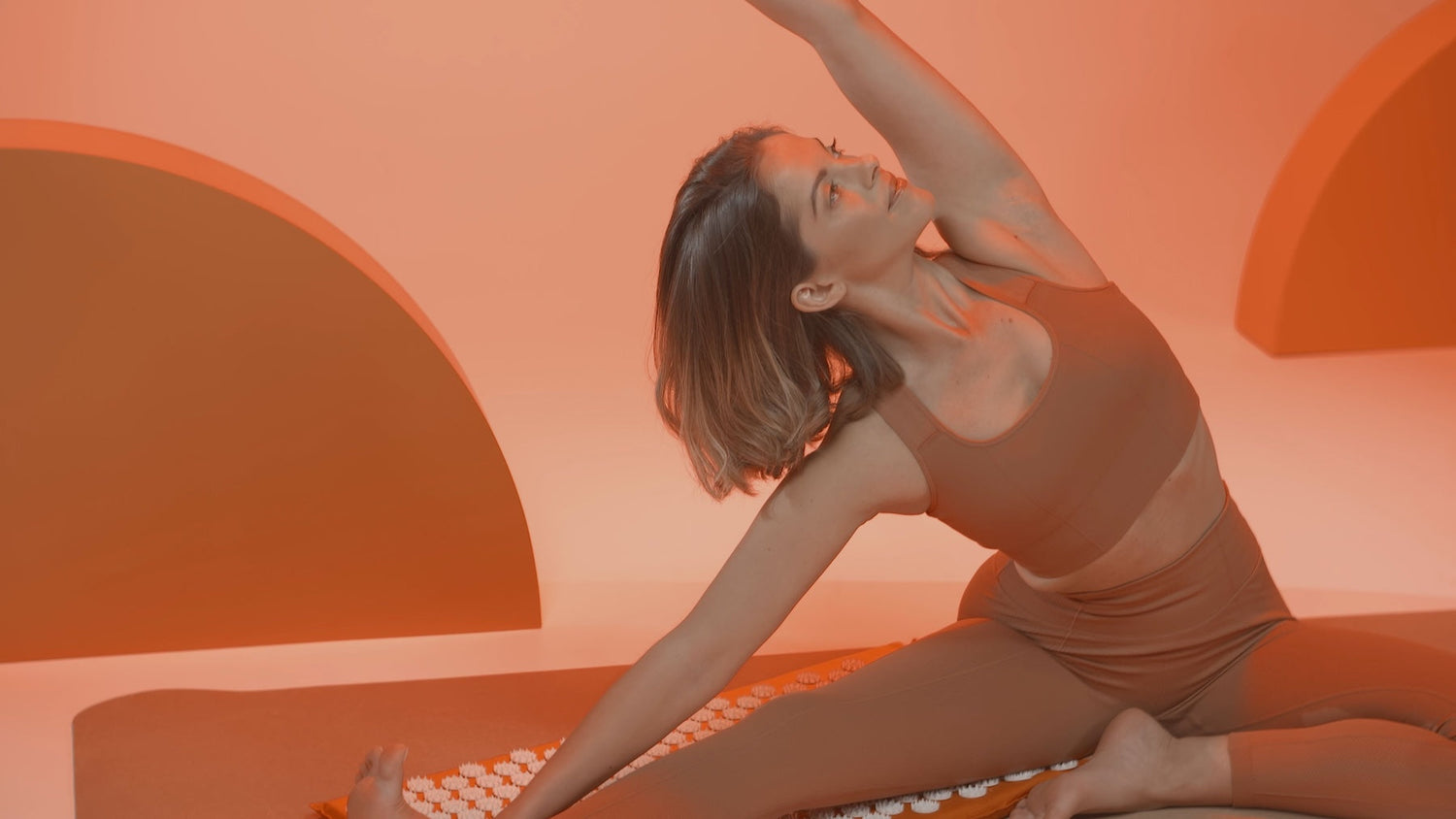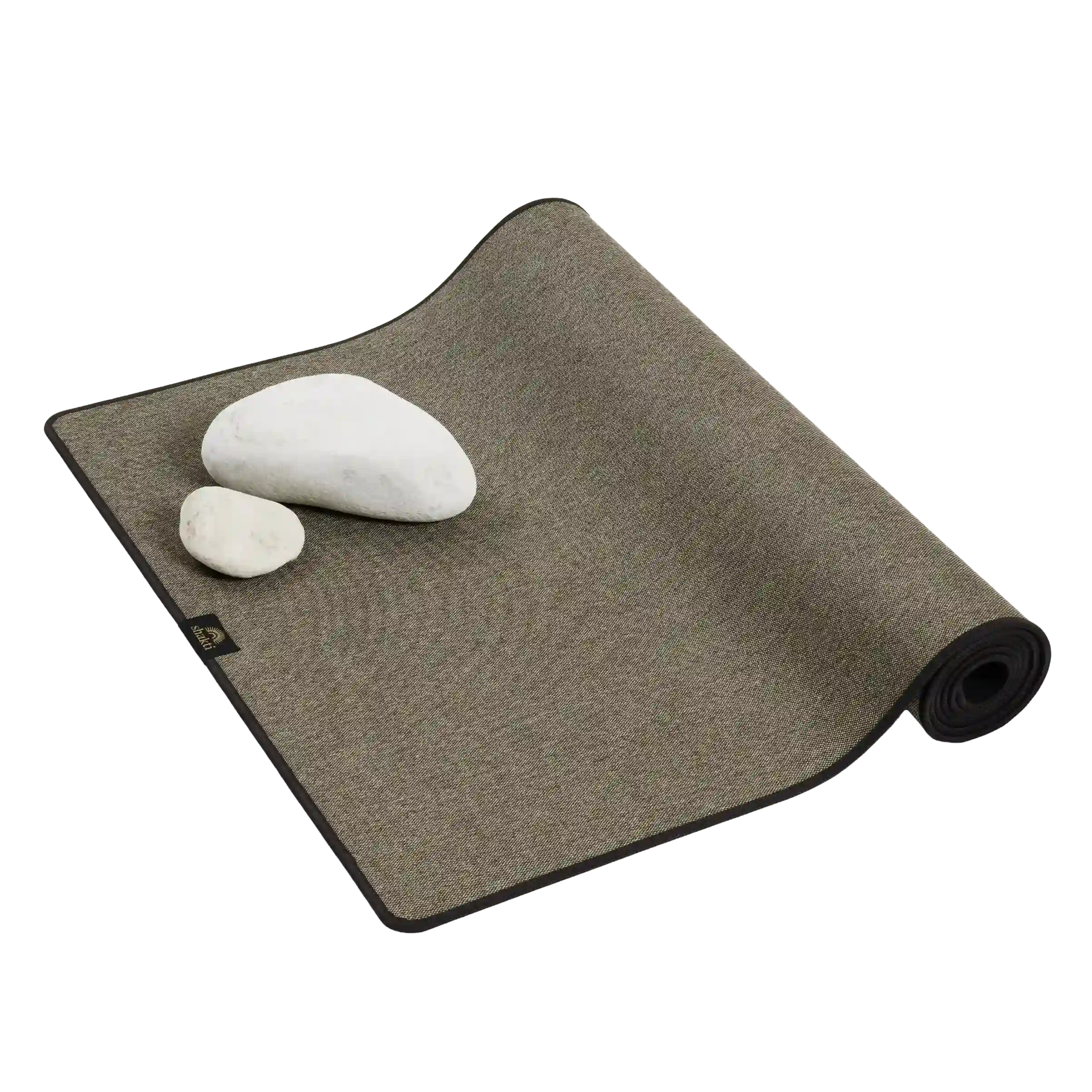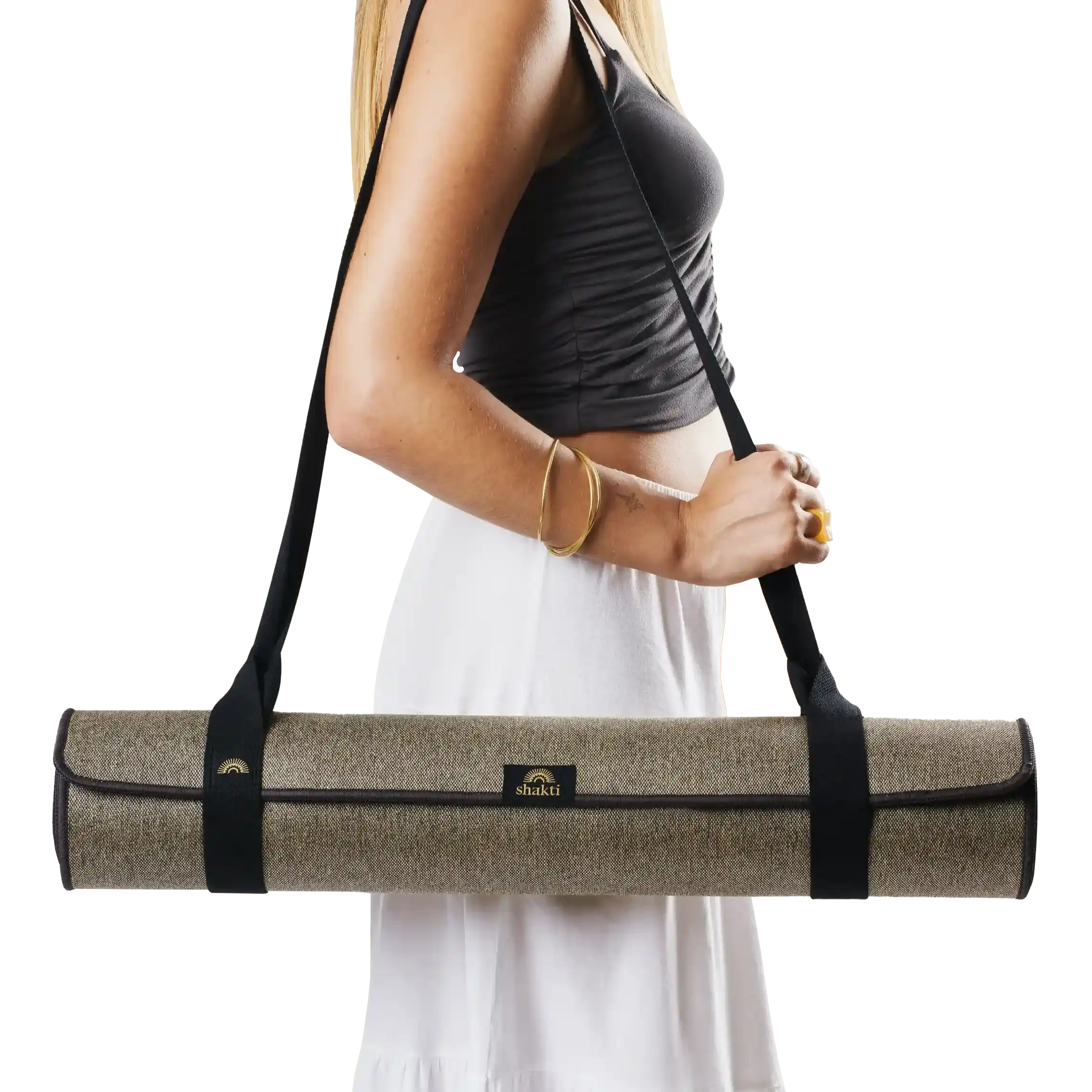Hatha yoga is one of the best-known and most widespread yoga practices in the world. As part of Indian medicine, this teaching sees an inseparable connection between body, mind and soul. The form of yoga focuses primarily on body-oriented practices such as certain postures, breathing exercises and relaxation exercises. Regular yoga can help you to reduce stress, strengthen your body and prevent back or neck pain.
Content
2. hatha yoga effect: you will feel these positive effects
3 Who is Hatha Yoga suitable for?
4. instructions for Hatha Yoga: 12 basic postures
5. use your ShaktiMat after your daily hatha yoga practice
What is Hatha Yoga?
The term "Hatha" is derived from the Sanskrit words "Ha" (sun) and "Tha" (moon) – a symbol for the dual energies within our bodies. This form of Indian teachings strives to establish a balance between these two energies while simultaneously strengthening and calming the body and mind.
It is essentially based on five pillars:
- Postures (asana)
- Breathing techniques (pranayama)
- Deep relaxation (Sharvasana)
- Meditation (Dhyana)
- Nutrition
Yoga practice is designed to improve physical strength, flexibility and stamina, while calming and focusing the mind.
There are different forms of hatha yoga
There are now many different forms of Hatha Yoga, including Hatha Vinyasa Yoga. This yoga practice combines traditional Hatha asanas with the dynamic movement of Vinyasa. Vinyasa means "movement with the breath" in Sanskrit. The asanas are practiced in a flowing sequence, with each movement coordinated with a breath. This is intended to promote not only physical flexibility and strength but also meditative mindfulness. The key difference between Vinyasa and Hatha Yoga is that in Hatha, the movements are held for longer periods, whereas in Vinyasa, a flow of movement is created.
Hatha flow yoga is another dynamic variation of hatha yoga. As with vinyasa yoga, the asanas are performed in flowing movements, but with more freedom in the design of the sequences. Here, even more consideration is given to the needs and abilities of the practitioner. This makes this form ideal for anyone who wants to add more variety to their yoga practice.
Hatha yoga vs. yin yoga: what's the difference?
Hatha yoga and yin yoga are both popular yoga styles, but they differ in their focus and practice. In hatha yoga, you focus more on performing the physical and breathing exercises. The exercises are more dynamic and are usually performed at a steady pace with flowing movements. The aim is to improve physical strength and mental clarity.
Yin yoga Yin Yoga, on the other hand, is a gentle, meditative practice in which the asanas are held for longer periods (often 3-5 minutes or more). This is intended to stretch and strengthen the deeper connective tissue, such as ligaments, tendons, and fascia. Yin Yoga promotes deep relaxation and inner peace because it emphasizes posture and letting go.
Hatha yoga effects: you will feel these positive effects
Yoga often has a holistic effect. If you integrate a regular yoga practice into your everyday life, it will enrich your life on several levels. Physically, yoga can improve your body's flexibility, muscle strength and balance. Optimized posture can alleviate complaints such as back pain in the long term.
Do you often still feel the stress and tension of the day in the evenings? Then Hatha Yoga asanas may help you relax deeply, leave stress behind, and calm your mind. Breathing exercises expand your breathing capacity and activate your life energy (prana). Emotionally, this form of yoga supports you in overcoming negative feelings like anxiety. It also promotes better sleep. and strengthens the immune system. Over time, you too will surely experience a sense of inner contentment that will carry you through your everyday life much better.
Who is Hatha Yoga suitable for?
Hatha is the perfect beginner's yoga and is therefore suitable for people of all ages and fitness levels. Beginners enjoy it just as much as experienced yogis. Thanks to the high flexibility and adaptability of the exercises, the yoga exercises can be perfectly tailored to the needs of each individual.
Hatha Yoga for beginners
If you have never or only very rarely practiced yoga before, Hatha is the perfect way to get started. The basic asanas are easy to learn. You can practise at your own pace and gradually work your way up to the more challenging poses. Performing the exercises slowly and deliberately helps you to focus on the individual parts of your body. What's more, you don't need a lot of equipment and can simply get started when you feel like it - even during breaks at the office.
Hatha yoga for seniors
Even older people with limited mobility can improve their well-being through hatha yoga. The gentle, adaptable exercises can be performed depending on the form of the day. The yoga practice helps seniors to maintain or even improve their flexibility, balance and muscle strength. Individual asanas can also be modified to better suit the physical needs of older people. Hatha yoga is therefore a perfect way to maintain quality of life and mobility in old age for a long time to come.
Tantric Hatha Yoga
In the tantric alignment of this yoga practice, you not only use your body, but also the knowledge of the energies in the universe. While performing the asanas, you focus your attention on the chakras (energy centers) of your body and the flow of energy. This allows you to connect with the energies and direct them through your body. This style of yoga is ideal for working on self-love and emotional balance.
Instructions for Hatha Yoga: 12 basic postures
Especially if you do not have much experience with yoga, you should first concentrate on the 12 basic postures. The exact classification of the asanas as basic postures varies slightly depending on the interpretation of the traditions. Basically, as a yoga beginner, you should be familiar with these postures in particular:
Tadasana (mountain pose)
Tadasana is the starting point for many hatha yoga exercises. Stand upright with your feet together, toes and heels touching lightly. The weight is evenly distributed on both legs. Straighten the spine, pull the shoulders down and let the arms hang relaxed at the sides.
Surya Namaskar (Sun Salutation)
In hatha yoga, the sun salutation is a dynamic sequence of twelve asanas that warms up the body and awakens energy.
Trikonasana (triangle pose)
In Trikonasana, open your legs wide with one foot turned outwards and the other slightly inwards. Bend your upper body to the side and stretch one hand towards the floor while the other points upwards.
Virabhadrasana (warrior pose)
Stand upright and take a large step backwards. Bend your front knee and stretch your arms out to the side.
Adho Mukha Svanasana (Downward-Facing Dog)
From the standing forward bend, move into Downward-Facing Dog by placing your hands on the floor and stepping your feet backwards. Your body forms an inverted V-shape.
Paschimottanasana (forward bend in a sitting position)
Sit with your legs straight and bend forward from the hips to grab your feet or shins.
Bhujangasana (cobra pose)
Lie on your stomach with your hands under your shoulders. Raise your upper body by stretching your arms while your hips touch the floor.
Balasana (child's pose)
Sit on your heels and place your upper body forwards, your forehead on the floor and your arms either stretched out forwards or at the side of your body.
Vrikshasana (tree pose)
Stand on one leg while the other is bent. The foot is placed against the inner thigh. Bring your hands together in front of your chest or stretch your arms above your head.
Dhanurasana (bow pose)
Lie on your stomach, bend your knees and grasp your ankles with your hands. Raise your upper body and legs at the same time so that your body is shaped like an arch.
Ustrasana (camel pose)
Kneel down, place your hands on your lower back and tilt your upper body backwards. Grasp your heels, lift your chest and let your head fall back.
Savasana (corpse pose)
Lie flat on your back with your arms at your sides and your palms facing upwards. Close your eyes and consciously relax every part of your body.
This final pose promotes complete relaxation of the muscles and mind and reinforces the positive effects of the previous asanas.
Use your ShaktiMat after your daily hatha yoga practice
For Hatha Yoga, you don't need any props other than your yoga mat, but with a little equipment, you can further develop your technique and make your yoga experience even more holistic. For example, by using the ShaktiMat acupressure mat before and/or after your yoga session, you can better prepare your body for the exercises and relax even more deeply afterward. You can also use your mat as a base for certain asanas during yoga to stimulate additional pressure points and further promote circulation. This can be particularly helpful for back pain. , muscle tension and stress can be helpful.



